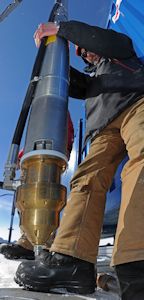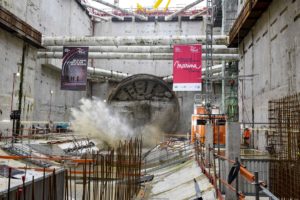Caprari’s Contribution to Scientific Research
For the past 16 years, a British team of researchers has been involved in an ambitious mission: explore Subglacial Ellsworth Lake beneath the West Antarctic ice sheet in the deepest drilling project of all times, in search of signs of primeval life.

Caprari
The aim is to acquire “cores”, each containing just 100 ml of water, thought to date back to one million years ago.
The first borehole was drilled last winter and reached a depth of 300 meters. Caprari pumps were used for the project. Water heated to 90°C was pumped into the borehole at a pressure of up to 138 bar. About 210 liters per minute of water were pumped in. A race against time since the bore channel, measuring just 360 mm, froze at a rate of 0.6 cm per hour despite the hot water pumped into it.
To equalize the pressure of the water, a cavity the size of a ship cargo container had to be created at the ends of the two bore channels drilled.
A 1.5 MW industrial boiler produced 90,000 liters of hot water, which was gradually pumped in through three basins. Power feeding was supplied by several generators. Around 100 tons of equipment had to be flown to the research site, some from over 16,000 km away and most had to be sterilized. This equipment included the Caprari submersible pump which, as Project Manager Martin Siegert underscored, "worked very well" despite the extremely adverse operating conditions. The efficient stainless steel borehole electric pump was coupled to a motor designed by Caprari. With 22 kW output at 400 V, the pump produced approximately 300 l/min flow rate at the depth reached in the project. Its overall diameter was just 146 mm, 2.5 m in length and weighing 111 kg. The unit was assembled on the hot-water drilling head, which alone weighed 200 kg and was 1.4 m long. A compact, one-piece, 3200 m feed pipe was made to operate the unit.
The project, which has not yet been completed, has cost 9.2 million euro to date.
With a drilling operation of this magnitude, all those concerned are venturing into proverbially "uncharted seas". Admittedly, it’s an unusual project for Caprari but still within the scope of its product specifications.
Source: Caprari S.p.A.






